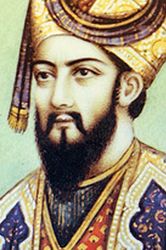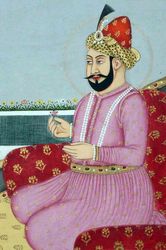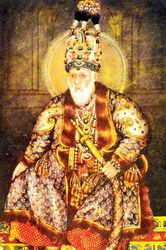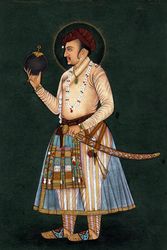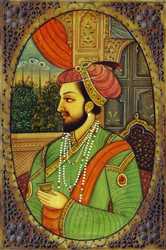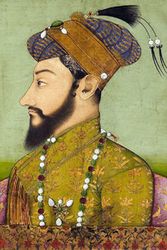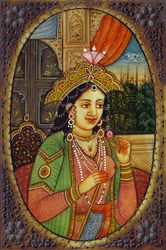Here are the biographies of the Mughal emperors, including that of Shah Jahan, the 5th, who built the Taj Mahal. There is also the biography of Mumtaz Mahal, his wife for whom the famous Indian monument was built.
Bâbur
Babur is the first Mughal emperor, founder of the dynasty that will reign from the sixteenth century to the nineteenth century on the north of India. It is his great-great-great grandson who will build the Taj Mahal. His birth name is Zahir ud-din Muhammad, BaBur being a nickname later granted and meaning "panther". He was born on February 14, 1483. He is a direct descendant of Tamerlane by his father. Tamerlane was a conqueror... (Learn more)
Humâyûn
Humayun is the second Mughal emperor, the dynasty ruling North India from the sixteenth to the nineteenth century. He is the great-grandfather of Shah Jahan, the builder of the Taj Mahal. Heir to a new and particularly unstable empire, he will have to fight two successive rebellions, lose his throne and will not be able to reconstitute his father's empire until after fifteen years of progress, going from battle to battle ... (Learn more)
Akbar
Akbar is the third emperor of the Mughal dynasty. He is the son of Humâyûn and the grandfather of Shah Jahan, the future builder of the Taj Mahal. He is the first of the Mughal emperors who can actually administer his empire, his two predecessors only conquering territory or seeking to restore order after rebellions. He was born on October 14, 1542 in Umarkot, a town in Sindh province, currently... (Learn more)
Jahangir
Jahangir was the fourth emperor of the Mughal dynasty who reigned over India from the sixteenth to the nineteenth century. His reign is characterized by a consolidation of the Empire, he forms a transition between the conquests of his predecessors and the apogee of the Empire represented by his successors. Named initially "Salim Nûr ud-Din Muhammad", his name of emperor comes from ... (Learn more)
Shah Jahan, constructor of the Taj Mahal
Shah Jahan is the fifth Mughal emperor, coming after Babur, Humayun, Akbar, and Jahangir, his father. His mother was the princess Manmati This dynasty of the North of India having reigned on large grounds. Born January 5, 1592 in Lahore, he died on January 22, 1666 in Agra at the age of 74 years. He is known as Shah Jahan, sometimes spelled Shah Jehan, but his official name is... (Learn more)
Aurangzeb
Aurangzeb was the sixth and last of the great Mughal emperors, a period that marks the peak of this empire that ruled North India from the sixteenth to the nineteenth century. After him his successors were weaker and only lost power, influence and territory to their enemies. Aurangzeb was the third son of Shah-Jahân, the builder of the Taj Mahal. Not having to initially receive the power, he took it by force against these 3 brothers, all ... (Learn more)
Mumtaz-i Mahal, for whom the Taj Mahal was built
Mumtaz-i Mahal was a princess from the Persian nobility. She was the daughter of Abdul Hasan Asaf Khan. She was born in Agra in 1593 and met the future Mughal emperor Shah Jahan while he was still Prince Khurram. The latter, falling under the spell of his beauty, was quickly engaged in 1607. It must be said that the chroniclers of the time tells us that it was a couple in perfect harmony, very in love ... (Learn more)
See also:






